The Dainichi Effect: Japan Report Five 令和6年
From Bujinkan Santa Monica by Michael
The Dainichi effect happened around midday, but first this morning I went to the 大江戸骨董市 Oedo Antique Market with Peter Crocoll. This market is quite large with many collectibles, art, and weapons. Many people bought and even wore vintage clothing. Peter found a book of 春画 shunga full of erotic woodblock prints as an amusing gift for one of his students back home.
From there we made a visit to 美術刀剣松本 Bijutsu Tōken Matsumoto. Peter brought another tsuka from home to be wrapped and restored. You may remember my trip last year when he had his first tsukamaki from Matsumoto. While we were there, a koshirae for a dagger caught his eye. The fittings had a rare decorative 海老鞘 ebisaya and Peter couldn’t resist adding it to his collection.
The Dainichi Effect
Later, seeking some inspiration, I returned to ponder the copy of Dojo Giga at the bookstore. When I randomly opened the pages, it fell open to Hatsumi Sensei’s painting of 大日如来 Dainichi Nyorai. Dainichi represents the center, and is the sun Buddha in Japanese esoteric Buddhism such as 密教 Mikkyō.
Depictions of Dainichi often show the hand gesture or mudra of 六大 rokudai. Each finger is part of the 五大 godai: chi, sui, ka, fu, and ku. They enclose the sixth element, 識 shiki, which is consciousness.
In the text of the painting, Soke wrote the name of 運慶 Unkei (1148-1224), who was a famous sculptor among the warrior class during the Kamakura era. Soke did this because in the year he painted, a new sculpture of Dainichi had been discovered and attributed to Unkei. Hatsumi Sensei’s painting was influenced by this discovery. This sculpture sold at Christie’s Auction house for an unprecedented $14,377,000 US dollars.
 |
| Hatsumi Sensei’s Dainichi painting hangs in the Bujinkan honbu dojo |
Hatsumi Sensei’s Dainichi painting is currently hanging in the Bujinkan Honbu Dojo. The text on the painting is a sort of memorial. It has the posthumous Buddhist names of both Takamatsu Sensei and Hatsumi Sensei. I first learned of these names some years ago when I climbed a ladder to help install shelves for the gold 位牌 ihai, which are Buddhist mortuary tablets displaying the names above the Kamidana.
I have an emotional memory related to Dainichi in the Dojo. It was the day Hatsumi Sensei had to move his wife into a care home. They had been married for many decades and Soke provided care for her in recent years. But he couldn’t manage it anymore.
When he entered the Dojo, he skipped his usual, jovial conversation, and walked straight to the altar of Dainichi under the Kamidana. He sat with his back to all of us and spent many minutes in private prayer. Afterwards, he began to quietly describe some items,
I bought that green tengu when Takamatsu Sensei passed away. At the end of 42 years, I got the one below it here. And here is Dainichi Nyorai. I was born in the year of Dainichi. At this 50 year anniversary maybe it’s some kind of divine message that these things come. This 50 year anniversary just came very suddenly, and next year with this completion of mutō dori, everyone will become a Daishihan and start teaching for themselves. That’s why all of the Daishihan should become friends and have a close community.
While Hatsumi Sensei was talking, I sat maybe a meter behind on his right side. I listened carefully since his back was to me. All of the sudden he asked the entire room who should be the next Daishihan. Several people pointed at me. Hatsumi Sensei turned to see who they were pointing at and he instantly agreed, exclaiming “Ok, ok!”
 |
| Senou Sensei reads Michael Glenn's Daishihan for presentation by Hatsumi Sensei |
The very next class he called me up to the front of the Dojo to sit before him. Senou Sensei read the new certificate and passed it to Soke, who then bestowed it on me. I bowed and everyone applauded. Hatsumi Sensei said, “There is a time for these things and when the time is right they should be given.” That this happened on the same day Hatsumi Sensei experienced a very personal life change makes me very humble and reflective. Maybe this is the Dainichi effect.
Training with Furuta Sensei
After these moments of reflection, I went to class with Furuta Sensei. Of course he gave me a ride from the train station. Training was in the school gymnasium, which is very large and has nice mats set up for Jūdō.
During the drive, he explained that he had just come from a meeting with Hatsumi Sensei and all of the new Soke. He wanted to share details, but I think he felt he couldn’t tell us everything. But he did share a few things.
He said that there was a new website (bujinkanhombuoffice.com) in the works for the Bujinkan. It will have official rules and rank order forms in an effort to streamline this process. There is also a new Daishihan lapel pin if you feel like showing off. Furuta Sensei also said that for someone to be recommended for Daishihan, they need letters from at least 3 current Daishihan.
Furuta started class with Ukemi, Sanshin, and Kihon Happō to warm up. He began to focus on the details of the 表逆 omote gyaku. He used some of his characteristic 雲隠流 Kumogakure Ryū angles. He showed this against a resisting opponent. Whereupon he emphasized how even one finger can break the resistance like a “push button.”
 |
| Furuta Sensei explains details of Oni Kudaki |
Pushing the button transitions into 裏逆 ura gyaku. And even further into 手枕 temakura, which he also showed as 袖枕 sode-makura. Then the last henka was 鬼砕 oni kudaki.
He changed to 半棒術 hanbōjutsu against a knife stab. He grew very energetic during this portion of the class. I think the Starbucks caught up with him. He yelled, jumped, and charged at opponents using very big swings of 八文字振りhachimonji furi. It was very funny and we had a lot of laughter. He described this energetic feeling as 気魄 kihaku, which is a fighting spirit.
Furuta Sensei next gave us a lesson about making mistakes. When you try to hit 小手 kote with only the tip or edge of the hanbō, you might miss. This is very natural. But you don’t want this mistake to be your defeat. Instead, you embrace the mistake and turn it into something useful.
 |
| Furuta Sensei uses a Hanbo against two knives |
He said that people don’t train for mistakes. They try to do perfect technique (which is impossible), but we should train for mistakes instead. Because we will always make some. Real combat is a clumsy, chaotic affair, so we should train for that reality. As Furuta Sensei said in his blunt English, “Mistake is good.”
The class had a lot of laughter and a good feeling. I think that is really the spirit that Hatsumi Sensei has given us. People try to be so serious, but training with a good heart and lots of laughter is best.…


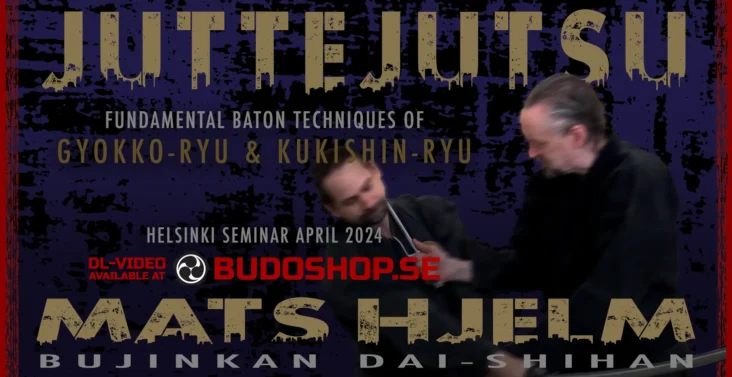
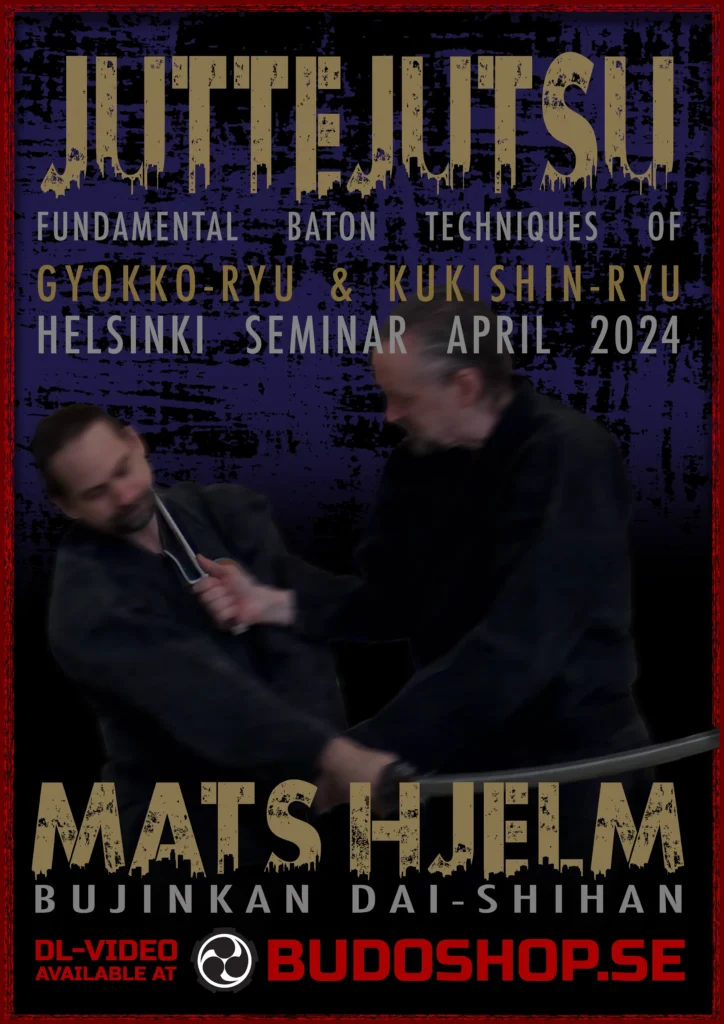
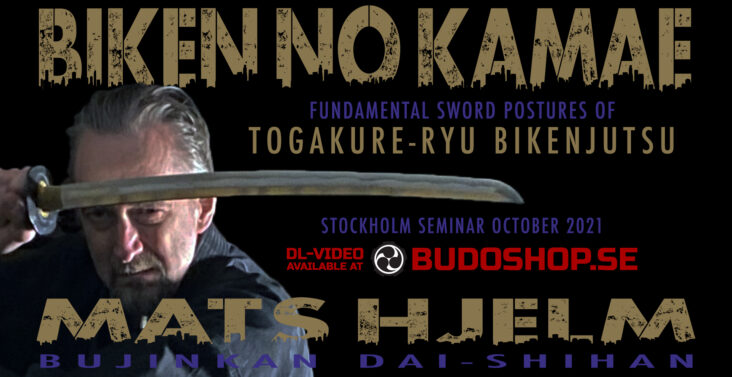
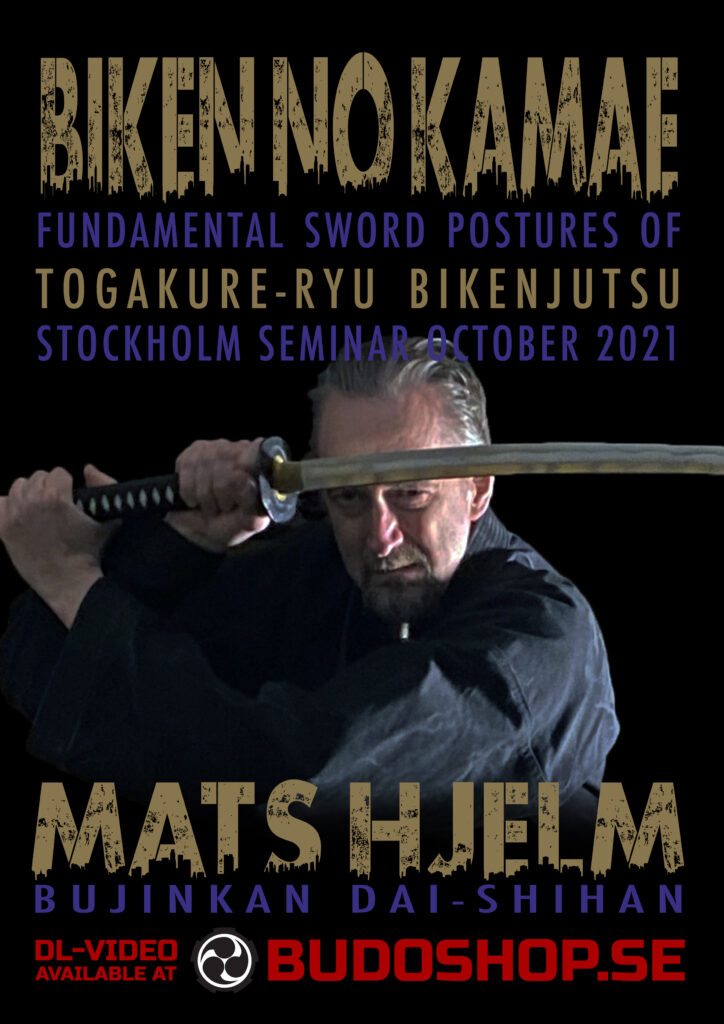

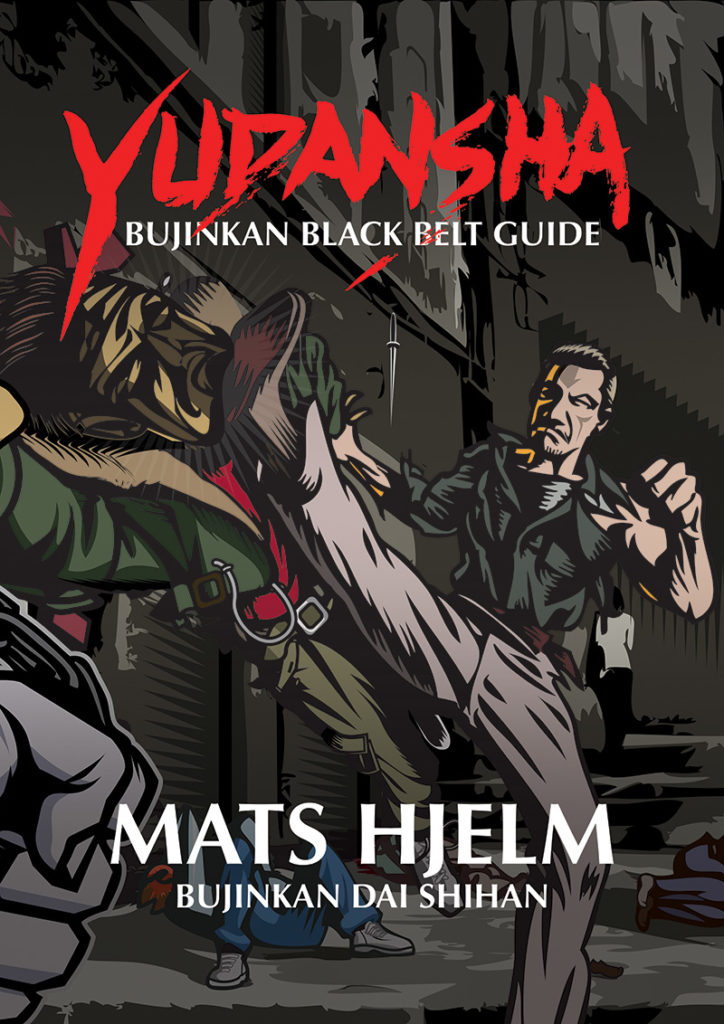 武神館有段者の案内所
武神館有段者の案内所
 20% DISCOUNT
20% DISCOUNT 
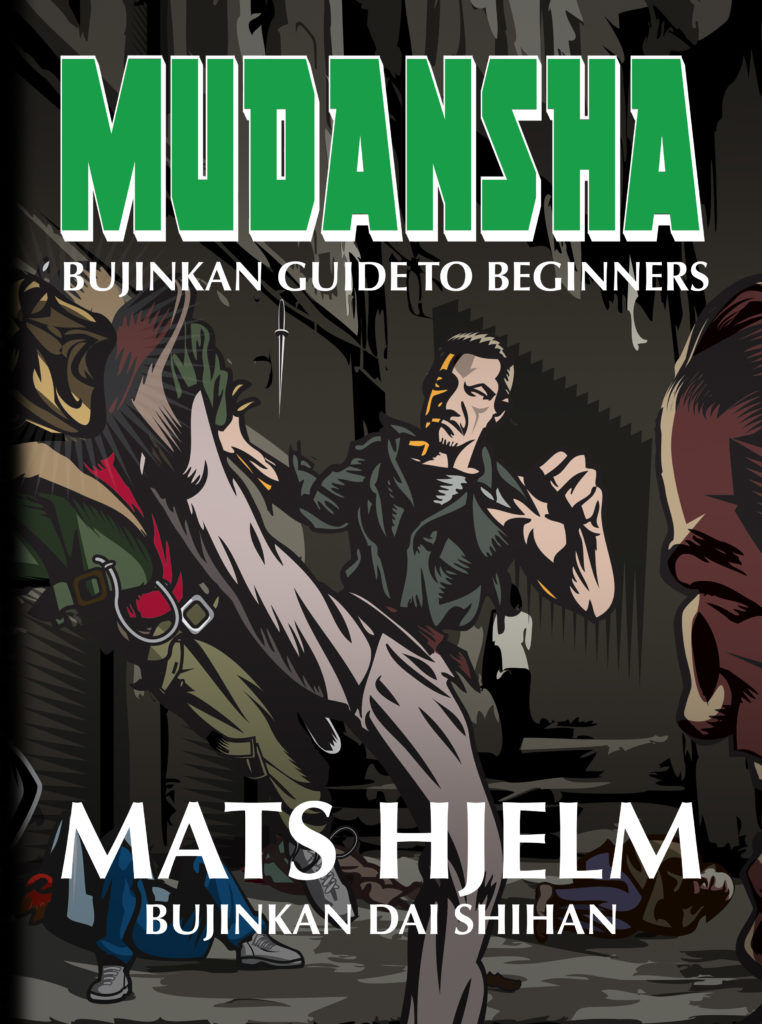

 武神館無段者の案内所
武神館無段者の案内所